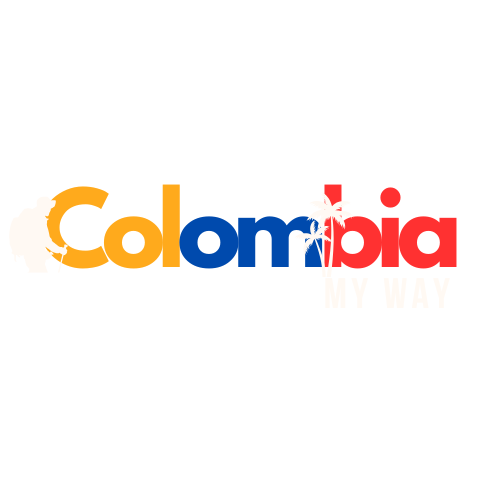Chapinero tour: coffee, culture and Tejo
Tour with a local in trendy Chapinero, Bogotá
During our previous trips to Bogotá, we had already seen the well-known tourist sights, such as historic center La Candelaria, Cerro Monserrate and the Salt Cathedral in Zipaquirá. Therefore, during our trip in September 2024, we were looking for something else to do. Our eye fell on the Chapinero hotspots and Coolture tour with a local guide. Chapinero is a centrally located neighborhood in northeastern Bogotá between La Candelaria to the south and the Zona Rosa (Zona T) to the north.
Chapinero Alto is known for its hip vibe and its many creative stores, restaurants and cafes. Vogue magazine even called Chapinero Alto the Williamsburg of Bogotá (a trendy neighborhood in New York).

The starting point of the tour was Almendro Repostería Artesanal, a cafe a 15-minute drive from our hotel in Teusaquillo. On our way to Almendro we drove through Chapinero Central, a busy neighborhood with many stores. It didn’t seem like the best neighborhood, but at one point we went uphill across an intersection and here we saw the busy neighborhood turn into a quiet residential area.

Our Uber dropped us off at the Repostería. We were quite early and waited at a table for guide Angela. In the café we could see right away, that Chapinero Alto is a trendy neighborhood. There were mostly hip, young people here. Given the several laptops, we noticed that Almendro is popular with digital nomads. Angela soon came in and introduced herself. She is a born and raised Rolo (native of Bogotá) who lived in Chapinero Alto for 5 years. She works as an IT designer and owns her own tour company, for which she gives tours in her spare time. In addition to this Chapinero hotspots and Coolture tour, she also does a Chapinero cocktail tour and a hotspots and Coolture tour in Usaquén, where she lives these days. We turned out to be the only two participants on the tour and Angela invited us to choose something delicious from the menu. We chose a cappuccino with a Media Luna (croissant).

Over dinner, Angela explained that Chapinero Alto is a popular place with families and expats. Singles also like living in Chapinero Alto because there are many social things to do and fun places to meet people. From Almendro we walked to the bookstore/publishing house Santo and Seña where we were given a guided tour. In addition to a large collection of Spanish-language books, there was a small collection of English-language books, vinyl records and even cassette tapes!

Angela also showed us a booklet of cartoons about the famous Colombian writer Gabriel Garcia Marquez. The cartoons tell the story of the writer before he became famous. Because Gabriel Garcia Marquez and his family had little financial resources, he had sent only the second (last part) of his first book to an Argentinian publisher. The latter was so enthusiastic, that he sent money to send the first part of the book. And the rest is history!
Boutique Mapa is a beautiful store selling jewelry, clothing and art by local designers. The unique shoes especially stood out. Varietal was our next stop. This is a well-known café in Bogotá, with several branches. We had our second cup of coffee of the morning on the cozy outdoor terrace.

On the bench in the garden we found Mafalda, a popular Argentinian cartoon character. Mafalda is concerned about world peace and has an innocent but serious attitude toward important problems. She plays an important role in Latin America’s long tradition of political satire.

Metkalu is the local “market,” where many local brands and organic products are sold. We found several interesting products, but because of our (already full) suitcases, we couldn’t buy too much. We bought tea made from cocoa and copoazú, a fruit from the Amazon (family of cocoa). We also couldn’t resist the soursop marmalade.

We really enjoyed walking around Chapinero Alto, with its up and down streets and English architecture.

You will find a mix of modern apartment buildings and old residential houses.

Angela explained that rents in Chapinero Alto have risen significantly in recent years and that many residential houses have been turned into restaurants and stores. The older houses are very spacious and different entrepreneurs can share the spaces with each other to reduce costs.
It is a cozy neighborhood, with an artistic vibe, fun neighborhood stores and a wide selection of restaurants and cafes.

In Chapinero Alto you can eat Japanese and Mexican food and order a real eclair or quiche from a French bakery.

In addition, there are several vegetarian restaurants, like Mesa Salvaje, which is also known for its delicious coffee. If you are vegan or vegetarian, then Angela’s veggie tour in Chapinero might be something for you.
We walked past the HAB Hotel, a boutique hotel located in a beautiful, stylish building. The HAB café is the hotel’s restaurant, which is also popular with locals. If you stay at the HAB hotel, you have more than enough culinary choices anyway, with several restaurants and cafes within walking distance.

For our next and final stop, we walked through Parque de los Hippies to Tejo Turmeque, a walk of about 10 minutes. Parque de los Hippies is -like the Santa Fe neighborhood- a “zona de tolerancia” which means that things that are not allowed elsewhere, such as drugs and prostitution, are tolerated here. By the way, Parque de Hippies is not a real park with greenery, it is more like a square where people gather and teens come to skateboard. In late 2019, Chapinero was the center of anti-government demonstrations. Concerts and other events were held in Parque de los Hippies.
Totally unexpectedly, Angela entered a doorway to Tejo Turmeque, a place we would never have found on our own! The street that Tejo Turmeque is on also had a somewhat “shady” feel to it. According to Angela, it is safe during the day, but not a nice place to walk around late at night. Playing Tejo had been on our wish list for a long time and now we had the chance! We were first given an explanation of the game, where you have to throw steel discs as close as possible to the center of a slab of clay. Then you get the most points.

Here you throw from a distance of 15 meters. If you throw on the paper envelopes filled with gunpowder, a big bang follows and you get extra points.

Of course, that was the thrill of the game! It took some practice, but we managed to hit well a few times.

It is said that the origin of the game lies with the Muisca Indians, who used gold discs during rituals.
Throwing the disc, we thought was a bit like bowling, but more exciting! Tejo’s main “rule” is: The more beer you drink, the better it goes -:)

We kept it to 2 beers, but nevertheless it went quite nicely for the first time! What a great experience to play this game, the three of us had a lot of fun. Next to us were 4 locals playing, which also went quite fanatically. In a larger group this will undoubtedly be fun too, with the competitive element!
The Tejo was the end of the tour and we enjoyed it! It was very nice to get to know a different part of Bogotá with a local, who not only knows the nicest spots, but is also familiar with the history of the neighborhood. Moreover, Angela is an interesting personality with a broad interest which allowed us to talk about all kinds of things, not only about Chapinero and Bogotá, but also about other places in Colombia, Europe and our home base Curaçao. In short: highly recommended if you are in Bogotá and want to do something fun that is not on the traditional tourist route!
Travel Date September 2024
Written by Jeanette
#ColombiaMyWay tips & practical information
- The tour lasts 3 hours and there are different departure times each day. Departure is from Chapinero Alto
- Tip: If you want to do the Tejo, you can only do it on tours starting at 2 p.m., Thursday through Saturday. On the other days, the tour ends with a cocktail. When booking, mention explicitly that you want to do the Tejo.
- An Uber from La Candelaria / Teusaquillo takes about 15min. We came from Teusaquillo and paid COP13,500/$3.50 for the Uber.
- Drinks and snacks are included, as are 2 beers at the Tejo. We found this more than sufficient, but if you want to order additional (alcoholic) drinks and food, this is at your own expense.
- Check out here for more information and to make a reservation
- Want to stay in this trendy neighborhood? Then check here your options for hotels and hostels in Chapinero.












































































